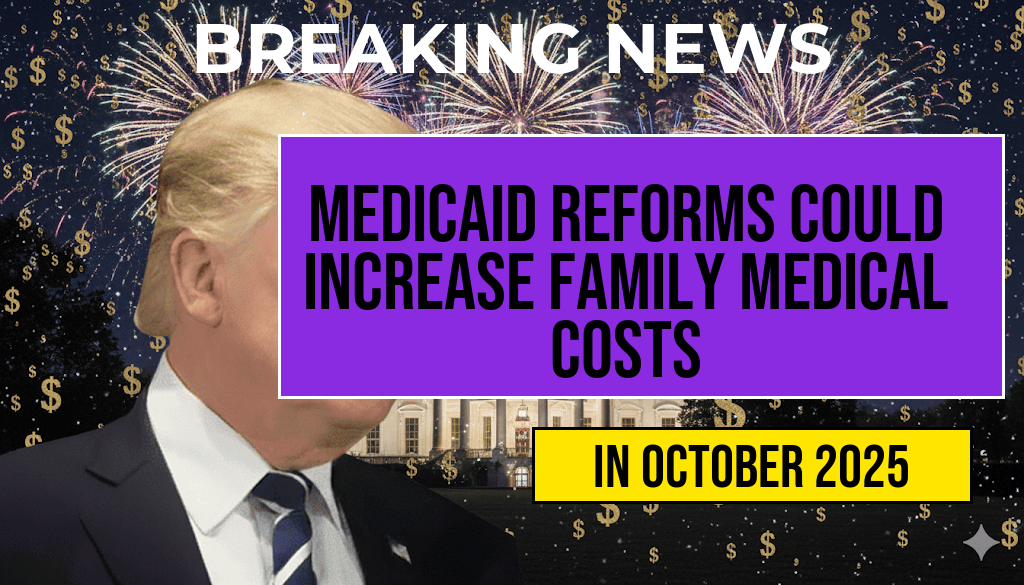Recent reforms to Medicaid eligibility and coverage policies are prompting concern among millions of American families, as projections indicate that out-of-pocket healthcare expenses could increase by more than $5,000 annually for some households. These changes, aimed at tightening eligibility criteria and shifting certain costs onto beneficiaries, threaten to deepen financial strains for families already struggling with medical bills. As policymakers debate the future of Medicaid, experts warn that these reforms may unintentionally widen disparities in healthcare access and affordability, especially for vulnerable populations. Families are now facing a complex landscape where reduced coverage options could translate into higher direct costs, leaving many to grapple with unexpected medical expenses that could compromise their financial stability.
The Roots of the Reforms and Their Intended Goals
Medicaid, the joint federal and state program providing healthcare coverage for low-income individuals, has undergone numerous policy adjustments over the past decade. Recent reforms focus on reducing Medicaid enrollment through stricter eligibility requirements, such as increased income verification, work requirements, and asset tests. Proponents argue that these measures are necessary to curb program abuse, control federal and state spending, and encourage employment among beneficiaries. However, critics contend that these measures could exclude many eligible families, effectively reducing access to essential healthcare services.
According to the Wikipedia entry on Medicaid, the program currently covers over 80 million Americans, with significant coverage for children, pregnant women, seniors, and individuals with disabilities. The recent reforms aim to streamline eligibility but risk leaving many vulnerable households without coverage, forcing them to find alternative means of healthcare financing.
Projected Financial Impact on Families
Estimating the Additional Out-of-Pocket Costs
| Household Income Level | Current Average Out-of-Pocket Expenses | Estimated Additional Costs | Total Estimated Annual Expenses |
|---|---|---|---|
| Low-income (<$25,000) | $2,500 | $3,000 | $5,500 |
| Moderate-income ($25,000–$50,000) | $4,000 | $2,500 | $6,500 |
| Upper-middle income ($50,000–$75,000) | $3,500 | $1,500 | $5,000 |
Experts estimate that, on average, families could see an increase of $5,000 to $6,500 annually in out-of-pocket expenses, based on current healthcare utilization patterns and the reduced Medicaid coverage options. This surge reflects higher deductibles, copayments, and the need to purchase private insurance plans to fill coverage gaps. For families already operating on tight budgets, these additional costs could force difficult choices, including delaying care or skipping necessary treatments entirely.
Factors Contributing to Rising Medical Expenses
Reduced Medicaid Coverage and Increased Private Spending
One primary driver behind the projected expense increase is the narrowing of Medicaid eligibility, which may result in fewer individuals qualifying for free or subsidized coverage. As a consequence, families are expected to turn to private insurance markets—often characterized by higher premiums and out-of-pocket costs—to maintain access to healthcare services.
Furthermore, the shift may lead to a rise in uncompensated care, with uninsured or underinsured individuals delaying treatment until conditions worsen, ultimately leading to more expensive emergency interventions. Healthcare providers might pass these costs onto insured patients through higher charges, further inflating expenses for families with coverage.
Potential Broader Impacts on Healthcare Access and Equity
Disparities and Vulnerable Populations
Data indicates that low-income households, racial minorities, and individuals with chronic health conditions are disproportionately affected by Medicaid reforms. Reduced coverage could exacerbate existing health disparities, as these groups often rely heavily on Medicaid for preventive and ongoing care. Without adequate support, they may face increased financial hardship and poorer health outcomes.
The Centers for Disease Control and Prevention (CDC) emphasizes that social determinants, including healthcare affordability, significantly influence health equity. As reforms tighten eligibility and shift costs onto patients, the risk of widening health gaps becomes more pronounced.
Public Response and Policy Debates
Community organizations, healthcare advocates, and some policymakers are raising alarms over the potential fallout of Medicaid reforms. They argue that the goal of fiscal responsibility should not come at the expense of vulnerable populations’ health security. Several states have paused or modified their implementation of these policies amid mounting criticism, emphasizing the need for balanced approaches that safeguard access while promoting fiscal sustainability.
Meanwhile, federal agencies are monitoring the situation, with some suggesting that increased transparency and targeted assistance programs could mitigate adverse effects. The debate continues over how best to reform Medicaid without imposing undue financial burdens on families already facing economic hardships.
Resources and Support Options for Families
- State Medicaid Offices: Families should verify their current eligibility and available programs. Visit the official Medicaid contact page for local offices.
- Health Insurance Marketplaces: Consider exploring plans through the Health Insurance Marketplace to find coverage options that may be more affordable, especially during open enrollment periods.
- Community Health Centers: These centers often provide care regardless of insurance status and can assist with sliding scale fees.
As Medicaid policies continue to evolve, staying informed and seeking guidance from trusted sources is vital for families navigating potential increases in healthcare costs and coverage challenges. Policymakers, healthcare providers, and community advocates alike face the ongoing task of balancing fiscal responsibility with the fundamental need for accessible healthcare.
Frequently Asked Questions
What are the main changes in Medicaid reforms that could impact families financially?
The recent Medicaid reforms are expected to lead to increased out-of-pocket expenses for families, potentially adding over $5,000 annually. These changes may include stricter eligibility criteria and reduced coverage, which can result in higher costs for medical bills.
How could Medicaid reforms increase medical expenses for families?
Medicaid reforms might limit coverage options and increase cost-sharing requirements, leading families to pay more for medical bills out of pocket. This could include higher copayments, deductibles, and reduced coverage for certain services.
Who is most at risk of facing higher medical bills due to these reforms?
Families with low to moderate incomes, especially those relying heavily on Medicaid, are most at risk. These reforms could disproportionately affect vulnerable populations by increasing their financial burden for essential healthcare services.
What should families do to prepare for potential increases in medical expenses?
Families should review their health insurance plans and consider alternative coverage options. It’s also advisable to set aside savings for potential medical emergencies and stay informed about changes in Medicaid policies that could affect their coverage and costs.
Where can families find more information about Medicaid reforms and assistance programs?
Families can visit official state Medicaid websites, contact local healthcare assistance offices, or consult with healthcare advocates to understand how reforms might affect them and explore available financial assistance programs.






